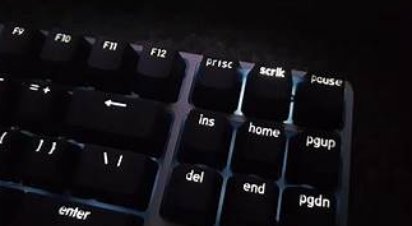RGB Lighting on a keyboard allows you to customize the backlighting for the keys. When a keyboard is simply labeled as LED, it usually means it only comes in one color. In today’s article, we make a comparison between LED and RGB of mechanical keyboard.

RBG Lightning On Mechanical Keyboard Vs LED
Ordinary LED is only monochrome display, RGB can achieve 16 million colors, and the lighting effect is more dazzling.
Difference Between Rainbow and RGB On Mechanical Keyboard
1. Whether the light can be adjusted. Mixed light generally means that different keys of the entire keyboard use different color lights, and each key is monochrome. The RGB keyboard has RGB LED lights, that is, colored lights, for each key. You can set the color yourself.
2. The installation of lamp beads is different. RGB is a color changeable lamp bead, and the light mixing is just to install different color lamp beads in each row.
3. Whether different effects can be customized. Ordinary LED is only monochrome display, RGB can achieve 16 million colors, and the lighting effect is more dazzling. For example, the Gujia X3 RGB mechanical keyboard can adjust the lighting effect of each key. The keys on the entire keyboard can be adjusted together to achieve rainbow and flickering love effects. RGB mechanical keyboard has higher cost, better lighting effect and stronger customization than LED.
As long as the LED mechanical keyboard can achieve the effect, RGB mechanical keyboard can do it. In case of mixed light, each line of keyboard is generally of one color. The color is fixed and the rgb backlight is used, such as the Rapoo v500 rgb alloy version. The keyboard theory has 16 million colors. The color of each key can be set to the color you like.
RGB Information
RGB is designed based on the principle of color luminescence. Generally speaking, its color mixing mode is like red, green and blue lights. When their lights overlap, the colors are mixed, but the brightness is equal to the sum of the three brightness. The more mixed, the higher the brightness is, that is, additive mixing.
The superposition of red, green and blue lights. The brightest superposition area of the central three colors is white. The characteristics of additive mixing: the brighter the superposition is, the brighter it will be.
Each of the red, green and blue color channels has 256 levels of brightness. At 0, the “light” is the weakest – it is turned off, and at 255, the “light” is the brightest. When the three color grayscale values are the same, gray tones with different grayscale values will be generated, that is, when the three color grayscale values are all 0, it is the darkest black tone; When the three color grayscale is 255, it is the brightest white tone.
RGB colors are called additive colors because you can produce white by adding R, G, and B together (that is, all light is reflected back to the eye). Additive colors are used for lighting, televisions, and computer monitors.
For example, the display emits light to produce color through red, green, and blue phosphors. Most visible spectra can be expressed as a mixture of red, green and blue (RGB) light in different proportions and intensities. If these colors overlap, they produce yellow, green, and purple.